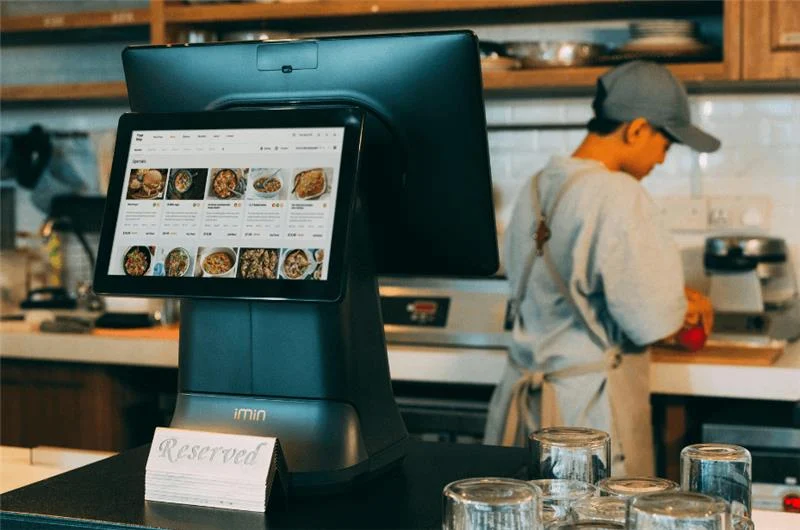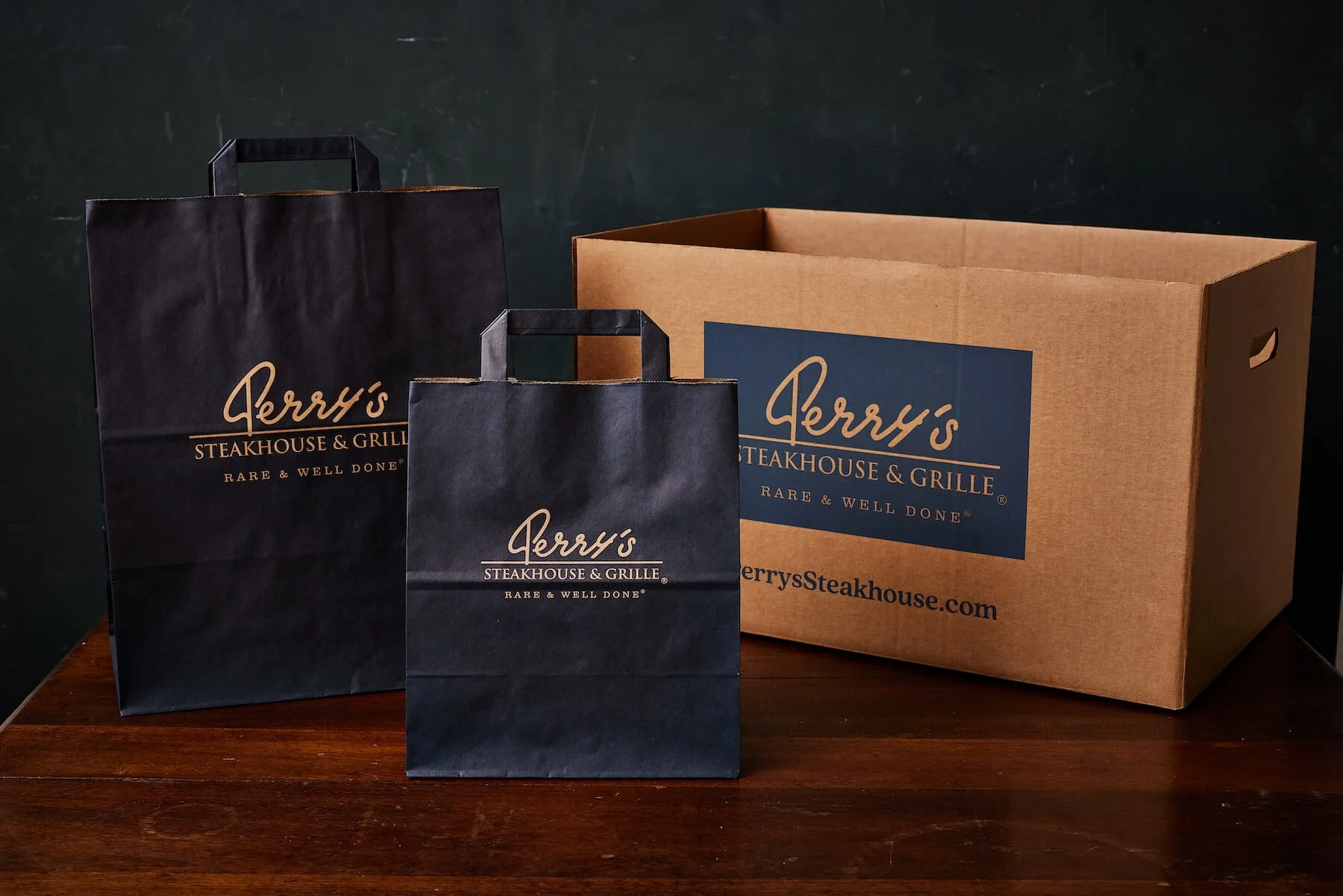
Trump Tariffs: How to Make Your Quick-Service Restaurant Unstoppable
Table of Contents
Will the Trump Tariffs ever take full effect? Nobody knows.
There’s only one thing for certain in 2025.
And that’s UNCERTAINTY.
If they do, costs will likely increase at every stage of your restaurant’s supply chain.
But there’s no need to panic.
In this guide, you’ll discover the best strategies and mindset shifts that will make your QSR brand unstoppable.

Build an Adaptive Mindset
An adaptive mindset is the ability to stay flexible, focused, and forward-looking during times of rapid change.
This mindset will help overcome challenges, like:
- Cost pressures
- Shifting customer behavior
- Supply chain instability
- Labor gaps
- Tech acceleration
- Fear of expansion
But how do you build an adaptive mindset?
Here are some tips to get you started:
- Focus on solutions. Don’t dwell on the problem. It will give you tunnel vision. Give your mind food for thought by asking yourself constructive questions or brainstorming ideas for solutions.
- Zoom out. Step back from the daily grind and look at the bigger picture. Spot trends, patterns, and long-term opportunities others might be missing.
- Build mental flexibility. Remind yourself daily that conditions can change. But so can your response. Consider letting go of the need to control every outcome.
- Strengthen your routines. Set a regular time each week to think through what’s working and what’s not. Consistent check-ins help you make better decisions under pressure.
- Limit negative inputs. Reduce noise. Replace doomscrolling with data, trends, and honest team conversations.
- Encourage reflection. Start each week with one question: What did I learn last week that can help me adapt this week?
- Lead with curiosity. In moments of pressure, ask—What am I missing? What else is possible? This makes space for unexpected solutions to emerge.

Trump Tariffs: The Best Strategies to Keep You Profitable
The pace of change isn’t slowing down, and neither should you.
With an adaptive mindset in place, let’s turn that clarity into action and explore the best strategies to lessen the impact of the Trump Tariffs.
1 | Find Smarter Ways to Source Your Packaging
The unpredictability of the Trump Tariffs makes imported foodservice packaging harder to manage.
The key isn’t avoiding overseas packaging suppliers altogether.
It’s working with partners who understand the nuances of global sourcing, which includes:
- Shipping timelines
- Tariff costs
- Import paperwork
- Origin labeling
- Customs clearance
- Currency exchanges
- Risk planning
- Supplier vetting
Brands working with global strategists, like Creative Retail Packaging, are navigating the Trump Tariffs using hybrid sourcing models.
This includes using trusted overseas packaging suppliers where it makes sense.
Then, offsetting risks through diversified fulfillment strategies.
Source smarter with these tactics:
- Identify your tariff-exposed SKUs. List all imported packaging items and flag those affected by current or upcoming tariffs.
- Diversify your supply base. Source from multiple regions or vendors to reduce risk from market disruptions.
- Use staggered or shared shipments. Lower freight costs by splitting containers or spreading deliveries over time.
- Lock in pricing where it counts. Secure fixed pricing on high-risk items and stay flexible on volatile categories.
Review and adjust quarterly. Revisit your sourcing strategy every quarter to stay ahead of cost and policy changes.
2 | Refine Your Takeout Experience
The restaurant customer experience no longer happens just at the counter or dine-in tables.
It happens in the app, at the drive-thru, and in the handoff for takeout.
The brands winning in 2025 treat every off-site interaction as a key part of the customer experience.
Check out these real-world examples:
- Chipotle: Streamlined its pickup experience with dedicated Chipotlanes and a high-functioning mobile app.
- Chick-fil-A: Optimized its drive-thru for speed and hospitality, with team members delivering orders with a smile and accuracy.
- Taco Bell: This fast food restaurant is testing new store formats that integrate beverages and delivery handoffs into an upgraded off-premise model.
Sources: Superior Seating | The Food Institute | The Takeout
Don’t worry if you don’t have a big budget like these foodservice behemoths to pull off some of these initiatives.
Use these simple tips to improve your takeout experience:
- Train staff for takeout excellence: Treat every handoff—whether curbside, counter, or drive-thru—as a key brand moment.
- Simplify the pickup process: Use clear signage, labeled shelves, or pickup zones to reduce confusion.
- Offer real-time order updates: Keep guests informed through your app or POS to manage expectations.
- Separate dine-in and takeout flows: Create dedicated pickup paths to prevent service slowdowns during peak hours.
- Include personal touches: Add thank-you notes or promos in your to-go packaging to make each customer feel valued.
3 | Upgrade Your To-Go Bags & Takeout Containers
If your to-go bags or takeout containers look flimsy or generic, it sends the wrong message.
But when your packaging is well-designed with intention, it becomes a valuable marketing tool and drives repeat visits.
Here are some of the best ways to upgrade your to-go packaging:
- Design with durability in mind. Choose paper materials that resist grease, hold heat, and protect food quality from prep to delivery.
- Add thoughtful details. Include extras like branded stickers, utensils, sauces, or reheating tips printed on to-go bags and takeout containers for a more complete experience.
- Enhance your brand’s identity. Craft custom to-go bags to reflect your visual identity, which includes your logo, colors, quality, and messaging.
- Ensure easy storage. Pick foodservice packaging that stores well in your kitchen and stacks neatly for delivery or takeout.
4 | Make Sustainability a Supply Chain Strength
The Trump Tariffs have hit packaging imports hard, especially plastic containers and disposables from China.
QSR brands that rely on Chinese-made foodservice packaging are now facing big cost increases and unpredictable timelines.
In contrast, many paper-based packaging items fall into lower-duty categories.
These sustainable solutions can also be sourced from global regions less impacted by U.S. trade penalties.
Eco-friendly packaging is a practical way to reduce tariff exposure, cut waste, and increase supply chain flexibility.
Check out these pro tips for going green:
- Switch from plastic to paper: Replace plastic items with recyclable or FSC-certified paper to-go bags that are cleaner, compliant, and customizable.
- Make sustainability visible: Customize your to-go bags and takeout containers with recycling labels, icons, or messages to share your sustainability story.
- Plan for policy shifts: Stay ahead of plastic bans by switching now to paper-based options that keep you compliant.
5 | Tune Your Menu for Profit and Flexibility
The Trump Tariffs can hit your food costs quickly and unpredictably.
Your menu is one of the few tools you can adjust in real time.
Focus on items that are profitable, easy to prep, and reliable to source.
A leaner menu cuts waste, protects margins, and keeps customers coming back.
Real-world example:
- Cava: Built a winning model by keeping food costs under 20%. Its menu focuses on bold, flavorful, customizable bowls that are fast to prepare, easy to scale, and cost-efficient to source.
Source: The Food Institute
Your brand can deploy this strategy, too.
Streamline your offerings with these menu engineering tactics:
- Double down on high-margin winners. Use POS data to spotlight items that are both popular and profitable.
- Eliminate complexity. Remove items that are slow to prep, rely on tariff-exposed ingredients, or cause kitchen bottlenecks.
- Offer price tiers for every budget. Use bundles, upsized portions, and LTOs to add value without raising ingredient costs.
- Monetize the extras. Sell high-margin add-ons like sauces, drinks, and sides to increase check size without more labor.
- Design meals that travel well. Prioritize items that hold temperature and presentation for 15–30 minutes after prep.
6 | Fill Labor Gaps With AI & Automation
Labor remains one of the highest and most unpredictable costs in QSR operations.
By investing in automation tools, you reduce errors, speed up service, and give your staff room to focus on what humans do best—HOSPITALITY.
These systems also generate valuable data.
This allows you to optimize staffing, prep, and inventory in real time.
Take a look at these real-world examples:
- Wendy’s is rolling out AI-enabled drive-thrus at hundreds of locations to improve ordering speed.
- Taco Bell is investing in AI and automation across both front- and back-of-house operations to boost efficiency.
- Chipotle is adopting tools like the Hyphen makeline and the Autocado to streamline food prep and reduce manual labor.
Sources: The Food Institute | The Takeout
If you don’t invest in these technologies now, you risk getting left behind by these big players.
Deploy AI and automation using these tactics:
- Use AI to streamline ordering. Install voice-enabled drive-thrus, app-based kiosks, or digital menu boards that adjust to real-time demand and speed up service.
- Automate repetitive prep tasks. Tools like slicers, rice cookers, or sauce dispensers free up staff for more valuable work.
- Connect all your ordering channels. Make sure apps, drive-thrus, and delivery systems work together to avoid mistakes and save time.

Key Takeaways for Quick-Service Restaurants
- Focus over fear. Fear freezes progress. Focus helps you find clarity, take action, and lead through uncertainty.
- Adaptability wins. Flexible thinking turns roadblocks into opportunities and helps your team move with confidence.
- Smarter sourcing saves more. The right partner can reduce tariff risk, stabilize supply chains, and uncover hidden efficiencies.
- Packaging builds your brand. Every to-go bag or takeout container is a chance to make your guests feel valued and impressed.
- Menus should be strategic. A high-margin menu boosts profits, simplifies prep, and keeps your operations agile.
- Technology gives you the edge. Automation and AI improve accuracy, speed, and team focus—so you can grow with less strain in any economic climate..

Future-Proof Your Foodservice Packaging
In a world of unpredictable costs, you can’t afford an inexperienced packaging supplier.
You need a partner who’s succeeded through every market condition over the past 45 years.
We think like strategists, move like operators, and provide expert guidance.
Here’s how we help you win:
- Smarter sourcing through a global supplier network
- Tariff-ready strategies that protect your margins
- Custom foodservice packaging that elevates your brand
- Flexible formats that scale with your growth
- Sustainable solutions built for long-term value
Let’s build a packaging program that performs.
Fill out the form below to get started.